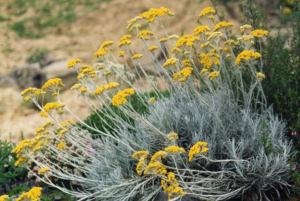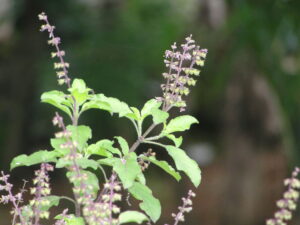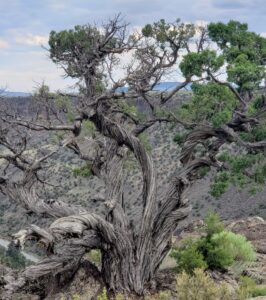Although the juniper genus is one of the rare genus of trees that is endemic to both North America and Europe, it wasn’t until I moved to New Mexico that my relationship with juniper really developed and I began to understand these smallish, robust, red-barked trees better. Robert Jackson, a professor of global environmental change and biology at Duke’s Nicholas School of the Environment and Earth Sciences reports that junipers are the most drought resistant group of trees ever studied. Their drought resistance is evident here in New Mexico. It is the high desert after all. The three main conifers that grow here are juniper, pinon pine and ponderosa pine. Studies have shown that the junipers out-resist even the very hardy and drought resistant pinon pines that they grow alongside.
So, how do junipers stay more drought resistant than the other trees?
It has to do with the xylem which is tree tissue in the form of a canal that transports water and mineral salts from the soil to all parts of the tree. The water goes up into the tree through a partial vacuum. The xylem is like a rubber band being stretched lengthwise. The drier the outside conditions, the more tension is exerted on the rubber band and the more prone to snapping it is. If and when it snaps air bubbles get in and the precious water doesn’t get to the tree.
Juniper has found a solution by structurally adapting to this fragility of the rubber band when stretched by reinforcing the xylem with extra lignin. This extra woodiness prevents the snapping action from occurring and therefore the rare and precious water can get to the tree. In the photo you can see a very old juniper that grows amongst other older junipers on sheer rocks, it survives and manages to harvest what little water available through its strengthened xylem. Pinons would not be able to survive here.
Juniper needles and berries are both aromatic parts of the tree, although the berries have always been thought of as more superior in aroma and medicine than the needles, which are reminiscent of turpentine, according to some.
In Europe juniper has been used for centuries for its aromatics.Traditionally dried and burnt as an incense, its main use was to cleanse, purify and ward off evil spirits. For this reason, juniper was burnt at funerals for its purifying action and also because it was an evergreen and therefore symbolic of eternal life. It was also burned to cleanse the house where someone had died. In Germany it was sometimes strewn on the road in front of the funeral procession as they made their way from the mortuary and the cemetery. In Germany, in the same way as the elder tree has always been thought of as a magical being, so was juniper. Neither tree could be cut down without bad luck arising to the person. In some rural locations, people would kneel down, take off their hats and pray in front of juniper trees.
Throughout history juniper has also been used to help and protect. For example in rural Italy juniper branches were hung from doors to ward off witches. The idea was that the witches would have to count the needles before they could enter the house and as the task would take longer than a whole night the witch would have to leave before the task was complete. Wagon drivers used whips made out of juniper as the added protection was thought beneficial to drive off any evil spirits traveling along the road.
The dasher in the butter churn was often made out of juniper to prevent the butter from spoiling. Also in Italy it was said that if you ate juniper berries every day you would attain eternal health. Children who were teething had a necklace of juniper berries placed around their necks.
Some christian stories say that the cross Christ died on was made out of juniper wood. Other Christian stories say he went to heaven from the top of a juniper tree. Have you seen the heartwood of a juniper tree? It’s a beautiful dark crimson color.
In the ancient Spanish town of Sagatum, there is an incredibly ancient temple to Diana. Its beams were constructed out of juniper wood. Magic beakers and vats were made of juniper and were so popular that they nearly wiped out all the junipers in some areas of ancient Europe. When in flower the pollen that blows everywhere was called ‘wood blessing’ in Dutch. A drink made from juniper was thought to help you see into the future and could be where the saying “Dutch courage” comes from.
The old herbals mention the use of juniper berries and seeds for strengthening digestion and for stomach pains. The berries and seeds were used to protect against the plague and then later as a cure for all kinds of infections, cleansing and purification. 
Tea made from the berries and young shoots was a common treatment for bladder infections due to juniper’s diuretic action, but as herbalist Matthew Wood says, although juniper is a traditional diuretic, due to the high content of aromatic oils that are heating and irritate the membranes, it is known as an irritating diuretic. They are helpful when the tissue needs tonifying, but are not indicated when the tissue is hot, inflamed or irritated.
Juniper has an affinity with fire and heat, which therefore makes it a useful remedy in cold, depressed, humid states. Its action affects the urinary, digestive and respiratory systems.
I like to go back to juniper’s effectiveness in adapting to and surviving in dry, places where moisture and organic matter are at a minimum when thinking about what type of person or state juniper could be a benefit for: Lymphatic, mucousy, bloated, water-logged states can be helped by juniper’s heating, drying, tonifying action.
Lastly, on an energetic level, in the same way that juniper has been used throughout history to purify and cleanse, places, people and things, it can be used to purify and eliminate negativity from body, soul and spirit. In the same way as it tonifies the physical body with its heat and volatile oils, it can help someone who is fatigued and weighing towards slight depression find a more energetic dynamic and even a sense of renewed courage to move forward with. Juniper gets things going helping to move stagnation in life. If you are feeling stuck add a couple of tablespoons of juniper hydrosol to a herbal tea or fizzy water or a cupful to the bath. In this way juniper stimulates not just the physical body’s circulation but circulation of the whole psyche (physical, emotional, mental and spiritual).
Here are more thoughts about juniper in a new video.
Here’s our latest artisanally distilled juniper hydrosol.





